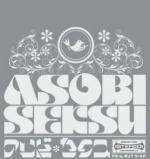Acoustic at Olympic Studios
Acoustic at Olympic Studios is an acoustic album by New York-based shoegaze band Asobi Seksu, recorded at Olympic Studios in Barnes, London. The album was first released in February 2009 by One Little Indian Records as a tour-exclusive CD,[4] then reissued and retitled Rewolf by their US label, Polyvinyl Record Co., in November 2009.[5] It contains mostly acoustic versions of songs from Citrus and Hush, as well as a few unique tracks.
| Acoustic at Olympic Studios / Rewolf | ||||
|---|---|---|---|---|
 | ||||
| Studio album by | ||||
| Released | February 8, 2009 | |||
| Recorded | Olympic Studios, November 2008 | |||
| Genre | Indie rock, shoegaze, dream pop | |||
| Length | 34:39 | |||
| Label | One Little Indian, Polyvinyl Record Co. | |||
| Producer | Paul PDub Walton | |||
| Asobi Seksu chronology | ||||
| ||||
| Alternative cover | ||||
 Rewolf album cover | ||||
| Review scores | |
|---|---|
| Source | Rating |
| AllMusic | |
| Pitchfork | (6.4/10)[2] |
| PopMatters | (7/10)[3] |
Track listing
All songs written by Asobi Seksu, except where noted.
- "Breathe into Glass" – 3:12
- "Walk on the Moon" – 3:56
- "Meh No Mae" – 3:29
- "New Years" – 3:11
- "Blind Little Rain" – 2:40
- "Urusai Tori" – 2:56
- "Suzanne" (Hope Sandoval) – 3:35
- "Gliss" – 4:05
- "Familiar Light" – 3:17
- "Thursday" – 4:24
gollark: I mean, maybe supercomputing facilities will also have test ones and/or some used as accelerators for specific tasks, but it won't be massively commonplace.
gollark: Quantum computing will improve, but mostly still be stuck as a very expensive shiny toy in 2030, though perhaps with some utility in doing specific calculations in research.
gollark: That "less vague" one was for the next decade, by the way.
gollark: Less vaguely, laptops/desktops or other discrete computer-type things will begin to (continue to, actually?) decline as people begin using phones with better dockable IO.
gollark: More vague predictions: computers will generally get faster, but also half the computing power will end up wasted on increasingly flashy animations, poorly programmed applications, and other random nonsense like that.
References
External links
This article is issued from Wikipedia. The text is licensed under Creative Commons - Attribution - Sharealike. Additional terms may apply for the media files.